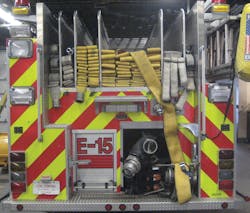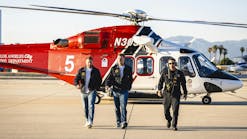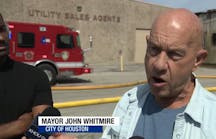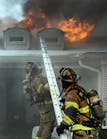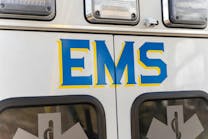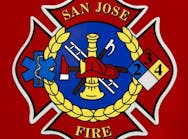It has been said a thousand times, but it still rings true – the most important life-saving tactic performed at the scene of a fire is stretching and operating an attack line to extinguish the fire. But this basic fireground operation often is taken lightly and performed poorly.
Do you know of an engine company with a solid reputation for making a good stretch and a tough push to quickly extinguish a fire? The members of that company didn’t get that reputation by accident. They earned it by training over and over until they mastered the stretch. They know that success on the fireground doesn’t happen by chance; it happens through preparation.
The purpose of this article is to reinforce the importance of stretching and operating attack lines. It is a tactic like many others on the fireground that deserves our focus and commitment to be understood and performed proficiently. This article breaks the stretch down into four phases. Each phase features a detailed explanation of the steps and the pitfalls associated with the stretch.
PHASE 1
The first phase is all about preparation; this first and most important phase starts at the beginning of our career during basic training when the foundation is laid for our future success. We are taught the fundamentals of hose, nozzles, appliances and extinguishment. Our training continues when we are assigned to an engine company. The officers and senior firefighters must ensure that our training continues. Being proficient at stretching and operating attack lines also requires you to be intimately familiar with the apparatus you respond on. And it is critical that you master the stretch.
How familiar are you with the attack lines on your engine?
1. How many attack lines are on your engine?
2. What are the hose diameters and lengths?
3. What types of nozzles?
4. What are the gpm settings and tip sizes?
5. What is the type of hose load – flat/minuteman/bundle load?
6. Are they pre-connected or static?
7. Are they crosslays or do the lines come off the back step?
8. What is your role when making the stretch?
9. Does your department have standard operating procedures (SOPs) for attack lines?
How many of these questions can you answer? Unless it was all nine, you’re not as prepared as you think! The more knowledge you have of the attack lines on your engine, the better prepared you will be to deploy the appropriate line. The more you drill and train on how to stretch attack lines, the more proficient you will be on the fireground.
Another important part of preparation has to do with your knowledge of the structures in your response area. Do you size-up the structures in your district when you are on calls other than fires? How about when you are doing inspections or getting the meal? The more knowledge you have about your first-due district and the structures you respond to, the easier it will be to anticipate potential challenges that will affect the stretch.
PHASE 2
The second phase is about size-up. Size-up begins as soon as information is received from the dispatcher. It continues while responding and is ongoing once you arrive on scene. The most critical portion of the size-up affecting the stretch starts once you arrive on scene:
1. Are you first due, second due, third due, etc.?
2. What are the occupancy, construction, height and size of the structure?
3. What is the size or extent of the fire?
4. What is your mode of attack – interior/offensive or exterior/defensive?
Once you answer the first four questions, you can choose the appropriate line and nozzle.
5. Where and how is the engine positioned, in the front or rear, did you pull past or stop short?
6. What are your obstacles – fences, cars, dogs, people, etc.?
7. What floor is the fire on and where will we enter to attack the fire?
8. Are we operating in the main fire building or an exposure?
Answer questions five through eight and you can estimate your stretch.
What is a stretch estimate and why is it necessary? A stretch estimate is conducted as part of your size-up to determine how much hose you will need to reach the structure and then make the advance and extinguish the fire. A stretch estimate is necessary in order to avoid two common fireground errors, stretching short and overstretching.
If a stretch is short, the attack line and nozzle will be unable to reach the fire:
• Final extinguishment will be delayed until the line can advance into the occupancy or room of origin.
• Any delay in extinguishing the fire will let the fire grow and possibly extend.
• It will delay the search and reduce the survival chances for trapped occupants.
Stretching short isn’t always about not having enough hose. Sometimes, it’s about soft skills and poor techniques by the firefighters making the stretch. You have enough hose, but because it was not properly deployed and staged, it will become tangled and snagged and stop the advance. (Also see “How to Avoid a Short Stretch” by John J. Salka Jr. in the February issue.)
Overstretching occurs when you deploy more hose than necessary:
• Every section of hose deployed must be flaked out and staged. If you don’t need the hose, why create more work for yourself?
• The extra hose will make it harder to advance, maneuver and operate if not staged properly, which will only slow your advance.
• Having unnecessary hose lying around will increase the chance for kinks to develop and reduce your fire flow.
Pre-connected attack lines have rendered the firefighter unable to think outside the box. Why deploy all 200 feet of hose in a pre-connect when you need only 100 feet? Can you stretch just the hose you need, disconnect the hose and hook it to a discharge on the pump panel? Yes, you can and you should to avoid overstretching. The results could be disastrous.
A stretch estimate is conducted as part of your size-up, whether you are deploying pre-connected lines of a specific length or a dead (static) hose load. Your stretch estimate will be divided into two parts:
1 – How much hose is needed to get from the engine to the entrance?
• This hose is referred to as your travel hose or travel length
• You will need this hose to get around cars, trees, fences and other obstacles
• To change direction and navigate alleys, court yards and stairs
Your attack entrance is going to be different for each situation. Are you stretching to the main entrance of a private dwelling for a fire on the first floor or to the entrance of an apartment for a fire on the third floor? Once you determine where you will enter, you can estimate the amount of hose needed to reach the entrance.
2 – How much hose will you need to get from the entrance to the fire?
• This hose is referred to as your working hose or working length
• You will need this hose to get around furniture and debris to advance through the occupancy
• To change direction and navigate doorways and stairs
In most cases, your working length will be a pre-determined amount of hose based on the buildings in your district. But what happens when you determine it’s not enough? Conducting a stretch estimate lets you identify occupancies that require more hose than the pre-determined amount so you can deploy enough hose to reach the fire.
PHASE 3
The third phase is about making the stretch. Each member of the engine should be assigned a function and responsibility, usually based on riding position, that clearly defines their role in making the stretch. If your department doesn’t assign riding positions, then the officer in charge (OIC) will need to assign each firefighter a function while responding or when you arrive on scene. The procedures and functions described in the sequence of photos (WHERE) are based on two firefighters making the stretch – the terms nozzle firefighter and backup firefighter.
The nozzle firefighter will:
1. Conduct a size-up and a stretch estimate.
2. Select the appropriate size attack line and nozzle under the direction of the OIC.
• Line selection is based on information gathered during your size-up and the fire-flow needs, not the line we always deploy out of habit!
3. Determine line placement to start the attack under the direction of the OIC.
4. Begin the stretch by deploying the working length, nozzle and as much travel hose as needed; this will depend on your stretch estimate. Remember to carry the working length separate from your travel hose
5. Time the deployment of your travel hose during the stretch for maximum efficiency. Deploy it too soon and you can create a pinch point and stretch short. Hold onto it too long and you will have too much hose at the entrance (overstretch).
6. Once you reach the entrance, deploy and stage the working length (Photo1).
• Stage the hose in a U shape-in line with the entrance so it will advance smoothly in the door (Photo 2).
• Place the first coupling close to the entrance. This guarantees 50 feet of hose from the door (Photo 3).
• If more hose is needed place the next coupling close to the entrance. This gives you 100 feet.
The backup firefighter will:
1. Ensure that the hose deploys smoothly from the hosebed during the stretch (Photo 4).
• Deploy only the hose necessary to keep pace with the stretch.
• Deploying hose ahead of the stretch that might not be needed will cause you to overstretch.
• The nozzle firefighter sets the pace for the stretch
2. For long stretches the backup firefighter assists with the stretch
• By deploying additional travel hose and following the nozzle firefighter (Photo 5).
• To ensure the nozzle firefighter reaches the entrance without deploying hose in the working length
• And to ensure you don’t stretch short
3. If stretching a dead (static) line and once the nozzle firefighter reaches the entrance
• Disconnect the hose from the hose bed and connect it to a discharge
• Advise the pump operator the discharge you connected too and how many lengths you deployed
4. If stretching a pre-connected line
• Make sure all hose is deployed from the hosebed and properly staged.
5. When the stretch is complete, chase the kinks out of the hoseline (Photo 6)
• Between the engine and the working length (nozzle firefighter is responsible for the working length)
• This must be done before the line is charged, after it’s charged it will be too late
• This will ensure the line is unobstructed and properly staged
• Remember one kink can decrease your fire flow by 10%
PHASE 4
The fourth phase is about advancing the attack line to extinguish the fire. This is where we earn our keep. We will be exposed to the most dangerous, challenging and rewarding part of the engine company’s job – putting out the fire! When we start our push the advance will go smoothly as long as we made a good stretch.
The nozzle firefighter may have “the best seat in the house” and get all the glory, but without the backup firefighter, the nozzle won’t make the fire room. Just look at the two check lists (WHERE?).
If we are prepared, conduct a good size-up and stretch estimate and make an efficient stretch, then the advance on the fire should be a walk in the park. We will have mastered the art of the stretch, quickly extinguishing the fire and making the fireground safer. We can all go home safe, able to look ourselves in the mirror, knowing we upheld our responsibility to the people we swore an oath to protect and to our fellow firefighters.
Your department may use different terminology or procedures, but breaking the stretch down into the four phases based on your department’s terminology and procedures is an excellent learning tool for mastering the stretch.
For more about fire service training, visit: http://www.firehouse.com/topics/training.
THE NOZZLE FIREFIGHTER’S CHECK LIST
? Make sure the working length is flaked out and properly staged
? Request the pump operator to charge the line
? Bleed off the line until all the air is out of it
? Chock the doors before you go through them
? Make sure you are using the right stream and gpm for the fire conditions
? Ensure proper body and hand positioning on the hose and nozzle
? Know when to open the nozzle and start flowing water and how to apply the stream
? Use all your senses to locate the fire – look, listen, feel
? Never pass fire; put out the fire in the order you find it
? Keep the engine officer updated on your progress
THE BACKUP FIREFIGHTER’S CHECK LIST
? Make sure the travel length is flaked out and properly staged
? Feed hose to nozzle firefighter; remember, the nozzle firefighter sets the pace, not you
? Make sure the doors are chocked before you go through them
? Make sure the line is unobstructed and free of kinks as it goes through the door
? When you come to a corner stop, make sure the line moves freely around any pinch points
? Move up on the line and take hose with you for the next corner or obstacle
? Don’t get to far separated from nozzle firefighter; you are a team
? Back up the nozzle firefighter on the line to let that member focus on stream application
? Monitor conditions behind you and the nozzle in case the fire gets behind you
BRYAN T. SMITH has been a member of the fire service for 30 years. He started as a volunteer firefighter with the Lutherville, MD, Volunteer Fire Company and in 1987, he was hired as a career firefighter with the Baltimore County Fire Department, where he currently holds the rank of captain at Station 15. Smith is a nationally certified fire service instructor and has served as an adjunct instructor at the Baltimore County Fire Rescue Academy and a lead instructor with Realistic Training Solutions LLC.
Bryan T. Smith
BRYAN T. SMITH has been a member of the fire service for 30 years. He started as a volunteer firefighter with the Lutherville, MD, Volunteer Fire Company and in 1987, he was hired as a career firefighter with the Baltimore County Fire Department, where he currently holds the rank of captain at Station 15. Smith is a nationally certified fire service instructor and has served as an adjunct instructor at the Baltimore County Fire Rescue Academy and a lead instructor with Realistic Training Solutions LLC.
